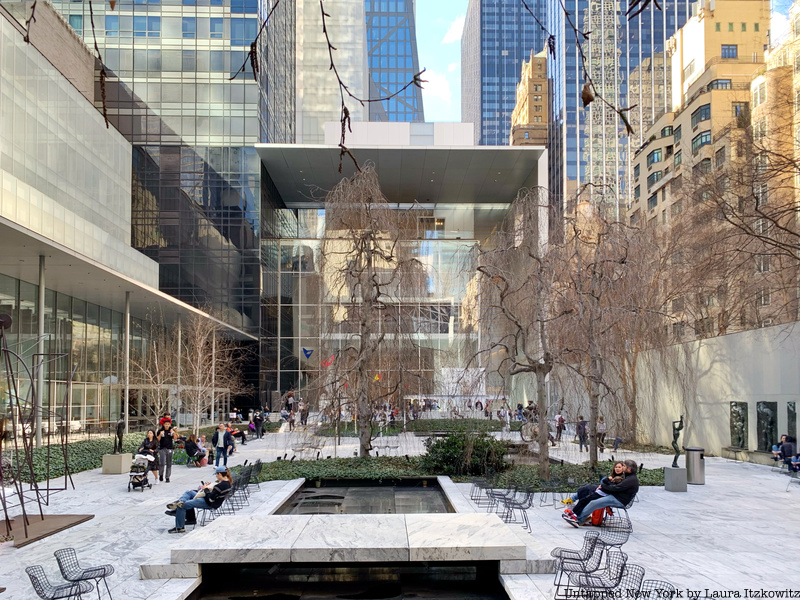5. The building was groundbreaking in NYC

For the museum’s tenth anniversary, a new building was commissioned — and it broke with typical museum architecture. Instead of a traditional Beaux-Arts building with a monumental staircase, The MoMA was designed in the International style with an entrance at street level. The architecture was meant to send a message that the museum is a democratic space and all are welcome. It was, in part, inspired by the Bauhaus designed by Walter Gropius in 1925, which The MoMA’s director Alfred H. Barr Jr. visited during a trip to Germany in 1927.
Barr apparently wanted Ludwig Mies van der Rohe (of the Seagram Building) to design the building, but the commission was given to American architects Philip L. Goodwin and Edward Durell Stone with a sculpture garden designed by the museum’s architecture curator John McAndrew and Barr. (The sculpture garden you see today was designed by Philip Johnson in 1953.) In stark contrast to the brownstones and Beaux-Arts townhouses on the block, The MoMA’s new building was six stories of sleek white marble with windows made of Thermolux, a new kind of insulated glass that helped diffuse light in the galleries. Upon completion of the new building, President Franklin Delano Roosevelt praised the museum in a radio address, saying, “In encouraging the creation and enjoyment of beautiful things we are furthering democracy itself. That is why this museum is a citadel of civilization.”





